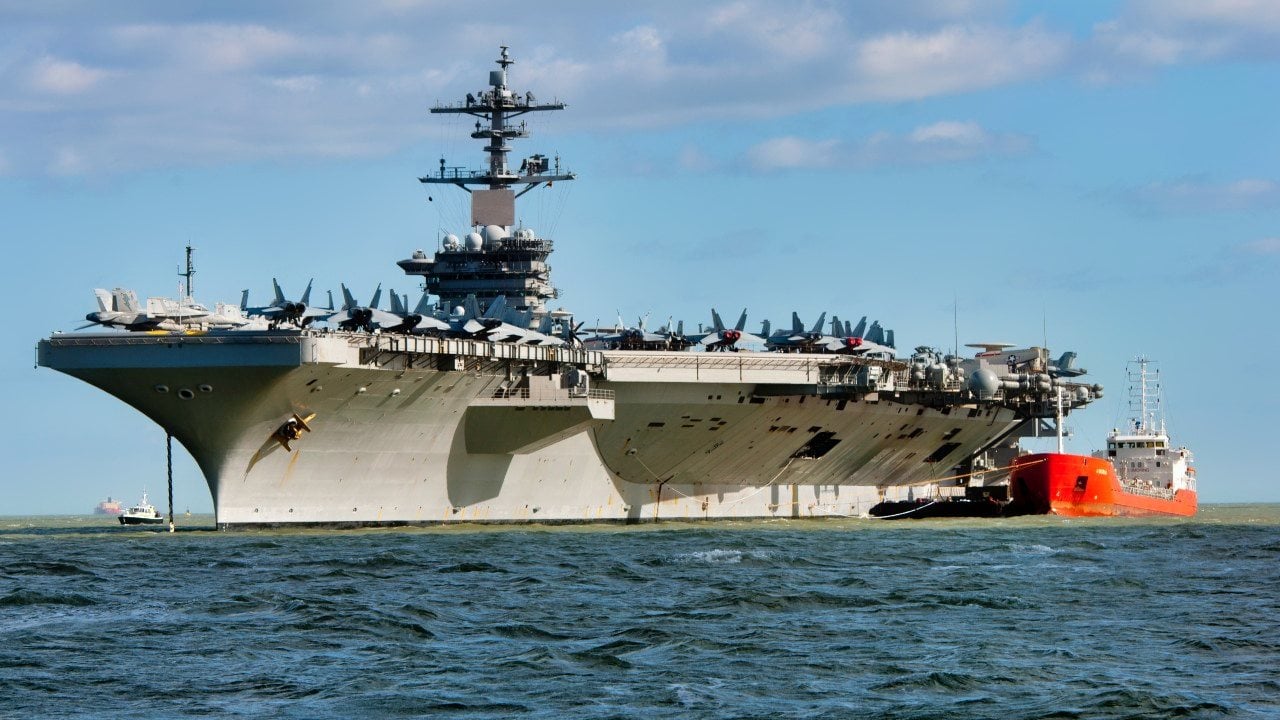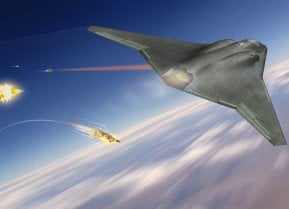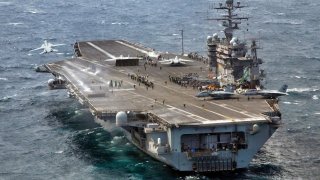'Big Stick' is Coming Home: USS Theodore Roosevelt Aircraft Carrier Is Headed Home
The USS Theodore Roosevelt (CVN-71) is heading back to San Diego after an extended deployment in the Middle East. Since October, the U.S. Navy has bolstered its carrier presence in the region in response to tensions following the Hamas-led terrorist attack on Israel.
Summary and Key Points: The USS Theodore Roosevelt (CVN-71) is heading back to San Diego after an extended deployment in the Middle East. Since October, the U.S. Navy has bolstered its carrier presence in the region in response to tensions following the Hamas-led terrorist attack on Israel.
-The Roosevelt’s return follows the arrival of USS Abraham Lincoln (CVN-72) in the Gulf of Oman, ensuring continuous U.S. naval strength.
-Alongside, the Ohio-class guided-missile submarine USS Georgia (SSGN-729) has also moved into the region, reinforcing the U.S.'s deterrence capabilities against Iran and its regional proxies.
USS Theodore Roosevelt Returns Home After Extended Middle East Deployment
For several weeks, two United States Navy Nimitz-class nuclear-powered aircraft carriers and their respective escorts have operated in the Middle East as a show of strength and to serve as a deterrent against Iran and its regional proxies. However, after seeing her deployment extended, one of those carriers is now returning home.
USS Theodore Roosevelt (CVN-71) reportedly began her transit back to her port of San Diego on Wednesday. The fourth Nimitz-class carrier began her current deployment in January.
Increased Carrier Presence in the Middle East
The U.S. Navy has maintained a rotating carrier presence in the region since last October, following the deadly terrorist attack on Israel carried out by the Tehran-back Hamas militants operating from Gaza. Israel responded by launching the largest military campaign in the region in decades, with the fighting marking its 11th month last week.
Since then, the Lebanon-based Hezbollah has also carried out missile strikes on Israel, while the Houthi rebel group in Yemen has launched missiles and drones at commercial shipping in the Red Sea and Gulf of Aden.
"U.S. commanders in the Middle East have long argued that the presence of a U.S. aircraft carrier and the warships accompanying it has been an effective deterrent in the region, particularly for Iran," the Associated Press reported via ABC News, adding, "Prior to last fall, however, it had been years since the U.S. had committed that much warship power to the region."

Even as CVN-71 returns home, her sister vessel USS Abraham Lincoln (CVN-72) arrived in the Gulf of Oman two weeks ago after United States Secretary of Defense Lloyd Austin ordered the carrier to expedite its transit to the region. This allowed the two U.S. Navy carrier strike groups (CSG) to overlap.
And while the departure of USS Theodore Roosevelt means the U.S. presence in the Middle East will be smaller, it shouldn't be seen as being diminished. It was just this week that the U.S. Navy also acknowledged that the nuclear-powered Ohio-class guided-missile submarine USS Georgia (SSGN-729) had also arrived in the region – bringing significant firepower with it.
As previously reported, the movements and deployments of the U.S. Navy's nuclear-powered ballistic missile and cruise missile submarines are normally a matter of the utmost secrecy. But these are far from normal times, and the Pentagon is looking to send a strong message to Tehran as well as its proxies. The Ohio-class SSGN had been operating for several weeks in the Mediterranean, but it has now passed through the Suez Canal and is now likely capable of striking positions through the Islamic Republic.
In addition, the U.S. Navy's presence in the region includes multiple warships in the Mediterranean Sea and at least two guided-missile destroyers in the Red Sea.
Author Experience and Expertise: Peter Suciu
Peter Suciu is a Michigan-based writer. He has contributed to more than four dozen magazines, newspapers, and websites with over 3,200 published pieces over a twenty-year career in journalism. He regularly writes about military hardware, firearms history, cybersecurity, politics, and international affairs. Peter is also a Contributing Writer for Forbes and Clearance Jobs. You can follow him on Twitter: @PeterSuciu. You can email the author: [email protected].
Image Credit: Creative Commons and/or Shutterstock.


